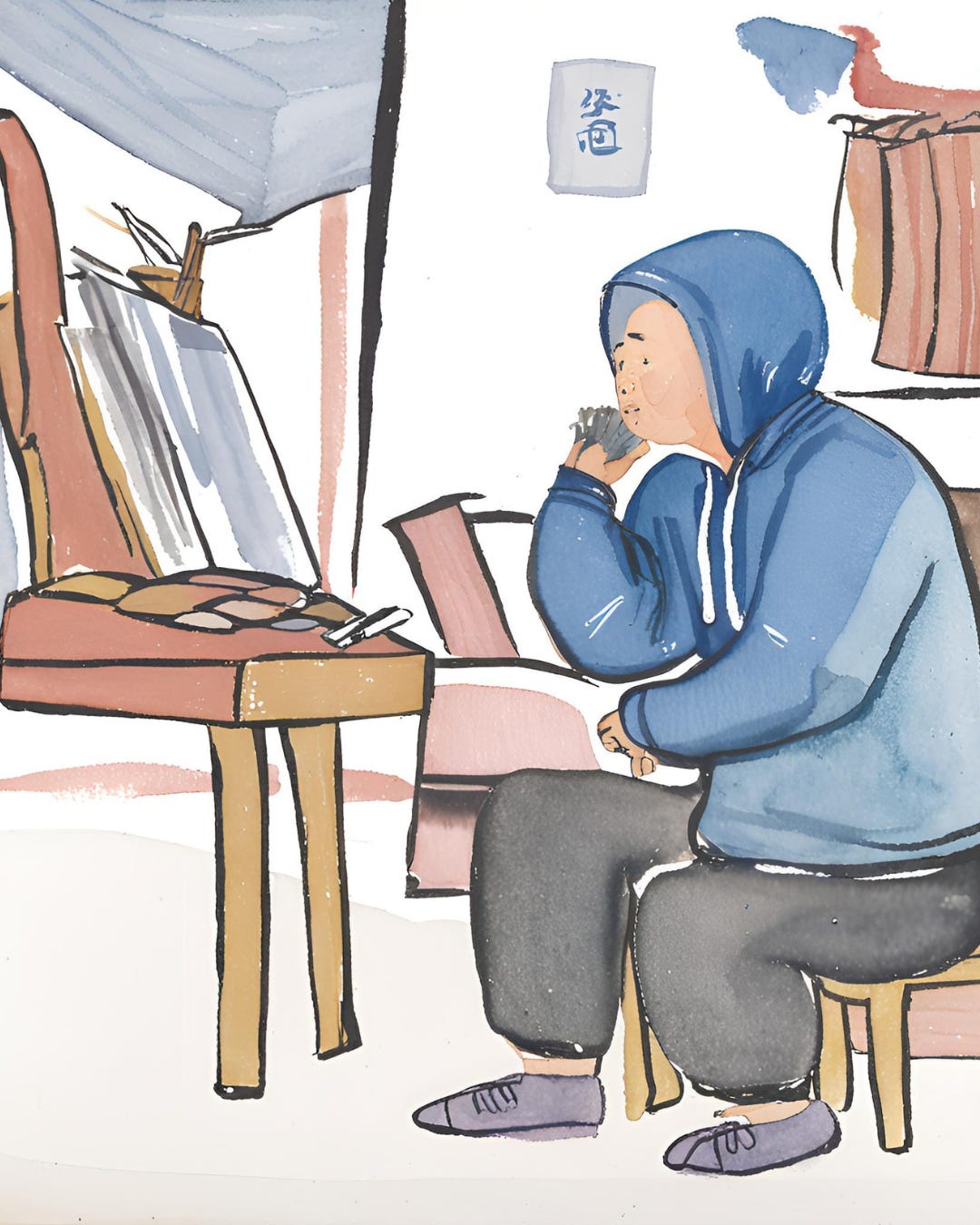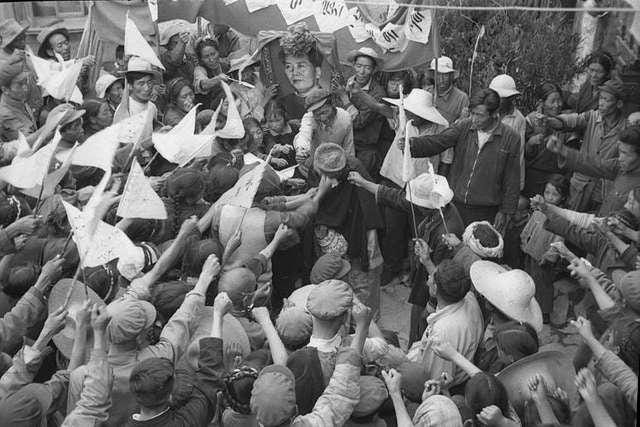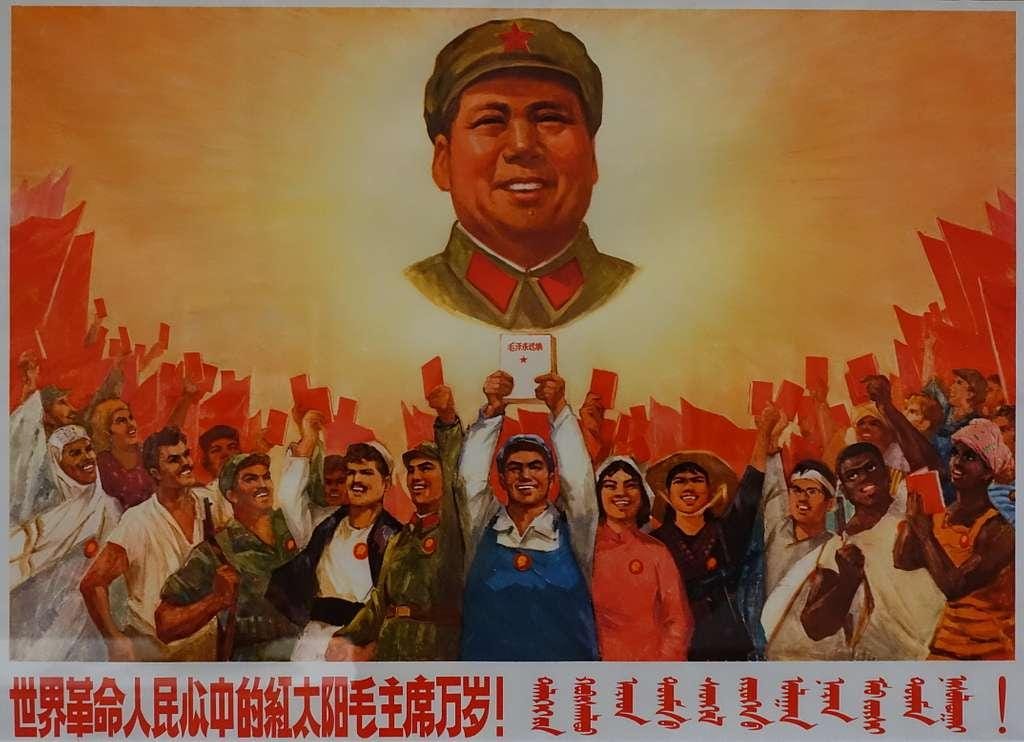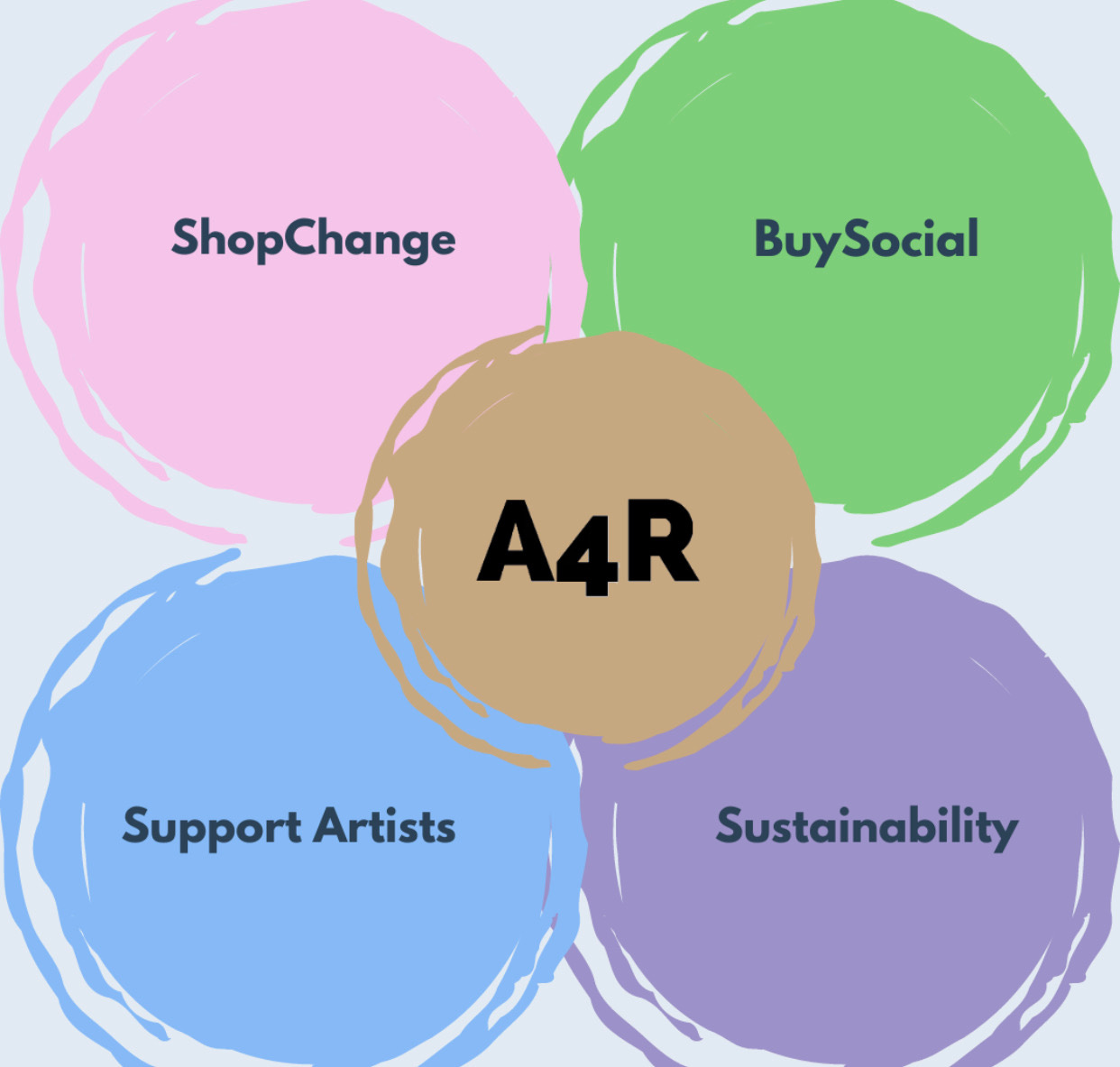From Soldiering to Protest Art:💔🖌️Daring Art Demanding Freedom
Read, Listen, Play & learn about Guo Jinag's arty refugee experience 🎮
Click here to play & learn.
Back Story
From Soldier to Painter: The Story of Artist Guo Jian and his defiance of Chinese Propaganda.
Introduction
What would it look like if you were to paint your worst nightmare? Perhaps it would free-falling off a cliff or being chased by a huge spider. But for artist Guo Jian, nightmares aren’t just imaginary horrors; they’re real memories of military indoctrination, propaganda, and political violence. Haunted by these visions for years, Guo discovered that the only way for him to process them was through painting.
Now living in exile in Australia, the 63-year-old Chinese artist transforms his trauma into powerful, unsettling artwork. On canvas, Guo distorts the images that used to control and manipulate him- smiling soldiers, patriotic performers, the glorified aesthetics of socialist realism- and twists them into unsettling and eerie paintings that are, honestly, a bit freaky to look at.
Guo’s story
Guo Jian was born in 1962 in southwestern Guizhou province and grew up in one of the most turbulent times in recent Chinese history. The communist ruler of China at the time was a man named Mao Zedong, and in 1966, when Guo was four, Mao launched the Cultural Revolution- a violent crackdown on intellectuals and free speech. Guo’s grandfather was one of the 1.5 million people killed during this period, an experience that left a lasting impact on him (BBC).
In 1978, 17-year-old Guo lied about his age and decided to join the PLA (People’s Liberation Army) as a propaganda painter with a group of 400 other teenagers from his province. This was part of the recruitment drive for the Sino-Vietnamese war. This period of his life was also traumatic. He describes how he and his friends were “packed like pigs” onto a freight train, brainwashed, and made to read army newspapers that fuelled hatred against the Vietnamese. He also describes how on occasion singers and dancers would be brought in to entertain the troops just before they were deployed to war. These events are depicted in his series of paintings named ‘The Day before I went Away’ (2008). In this series he offers his interpretation in depicting how young women were used in these “covertly erotic” performances to stir up emotions and create a sense of bloodlust.
After his time in the PLA, Guo continued working as a propaganda painter, firstly for a transport company and then for a government department for promoting China’s One-child Policy. In 1985, he beat the odds to secure a place at China’s Minzu University Art Department in Beijing—one of just three people selected from 6,000 applicants in his province.
Guo arrived in Beijing at a time of great change with the emergence of the “New Wave” movement, which gave rise to a generation of radical artists eager to challenge societal norms. In 1989, he partook in the Tiananmen square student protests against the Chinese government, a pivotal moment in modern Chinese history. During the movement, young PLA soldiers (like Guo had once been) open fired on the peaceful protesters. Guo remembers vividly having to carry bullet riddled bodies of fellow students from the square.
Guo Jian’s involvement in the Tiananmen Square protests led to his blacklisting by the Chinese government. For three years, he struggled to find work, unable to exhibit his art or secure any meaningful employment. Faced with increasing repression, he eventually left China and moved to Australia to continue his artistic career.
In 2014, after temporarily returning to China, Guo was detained for creating a provocative artwork commemorating Tiananmen. He made a diorama of the square covered in 160kg of raw minced pork, symbolising both the massacre’s bloodshed and the government’s ongoing suppression of the event. After speaking about this piece in an interview with the Financial Times, Chinese authorities arrested him, interrogated him for hours, and detained him for 15 days. He endured grim conditions but avoided a worse fate because of his Australian citizenship. Unlike many other Chinese artists and political activists who have faced harsher consequences, Guo was forcibly deported to Australia on the grounds of having an invalid visa and banned from returning China for five years. He remains under government surveillance and would struggle to continue his work if were to return. He continues to exhibit his artwork in Australia and around the world today.
A photo of a crowd publicly humiliating someone during the Cultural Revolution.
The themes and features in his artwork
The main themes that appear in Guo’s artwork are sex and violence, and because of this his work is unsettling and even disturbing to look at. His paintings usually contain sexualised young women wearing traditional ballet costumes or army uniforms and performing for Chinese PLA soldiers. This is often a mixture of Western or Chinese women, who are dancing or singing, but they are almost always shown for their sexual appeal. The soldiers, who are usually carrying some form of weapon, often have incredibly large smiles, so much so that their faces become almost distorted and eerie looking. To make it all a bit stranger, their faces are often repeated versions of Guo’s own face. The paintings are quite literally “nightmarish".
The women in Guo’s artwork are supposed to be displayed as sirens that manipulate the soldiers and make them sexually frustrated. They perform erotically, and in this way, they make the soldiers crazed and full of bloodlust. This, Guo argues, was a tactic used by the Chinese government to make troops more willing to go into battle.
Having experienced this himself during his time in the PLA, Guo Jian is displaying how manipulated he and other soldiers were during their youth. The huge smiles they bear in his paintings shows how crazed the soldiers have become- they look literally insane. His collection named “1979,” perhaps best showcases this, as it is based on his time in the PLA. In it, he has painted himself and his friends looking incredibly happy and patriotic, unknowing of the horrors they would endure. These images are also inspired by modern Chinese military propaganda used today, showing hopeful young soldiers.
Guo’s technique is also deeply symbolic. He paints in the style of socialist realism, characterised by smooth surfaces and bright colours, the same style once used in Chinese propaganda posters. By using the artistic techniques he was taught in the PLA and at Minzu University, he turns them back against the government as a form of protest.
A Chinese Socialist Realist propaganda poster displaying communist leader Mao Zedong looking over a crowd of workers.
Why his work matters today
At a time when free speech is becoming increasingly under threat, I think Guo’s message is becoming ever more relevant. Although his work challenges Chinese state oppression, it certainly can be applied to global trends too. The painter used his trauma and experiences of an oppressive regime to turn around and criticise that same oppressive regime, risking his livelihood. A very brave move indeed. In a 2014 interview with The Guardian newspaper, Guo states that despite his exile from his homeland, he has no regrets, saying that he is “so proud” of what he did. Of course, I’m not saying we should all go and get ourselves temporarily exiled, but I think Guo’s actions are something to be admired. His story teaches us some valuable lessons about resilience, courage and self-expression. Maybe we should all try to be a little more like Guo Jian.
Bibliography
Artist Profile. n.d. "Guo Jian." Artist Profile. Accessed 25 March 2025. https://artistprofile.com.au/guo-jian/.
ARC ONE Gallery. n.d. "Guo Jian - Artist Profile." Accessed 25 March 2025. https://arcone.com.au/guo-jian-artist-profile.
ABC News. 2014. "Who is detained Australian-Chinese artist Guo Jian?" ABC News, 4 June. https://www.abc.net.au/news/2014-06-04/who-is-detained-australian-chinese-artist-guo-jian/5497900.
The Guardian. 2014. "Guo Jian on his art about Tiananmen Square: ‘I'm so proud of what I did’." The Guardian, 4 November. https://www.theguardian.com/culture/2014/nov/04/-sp-guo-jian-on-his-art-about-tiananmen-square-im-so-proud-of-what-i-did.
The Guardian. 2014. "Australian artist Guo Jian arrested before Tiananmen anniversary." The Guardian, 2 June. https://www.theguardian.com/world/2014/jun/02/australian-artist-guo-jian-arrested-tiananmen-anniversary.
BBC History. n.d. "Mao Zedong." BBC History. Accessed 25 March 2025. https://www.bbc.co.uk/history/historic_figures/mao_zedong.shtml.
In this post Lucy highlights the arty refugee experience of Guo Jian. She is a citizen journalist on a placement with us organised by Oxford University Career Services. She also organised the micro game to make the journalistic experience interactive.
Thank you for reading an A4R 🎨 Post. Don’t forget to visit our gift shop here. Every purchase scales our impact and pays our bills.







